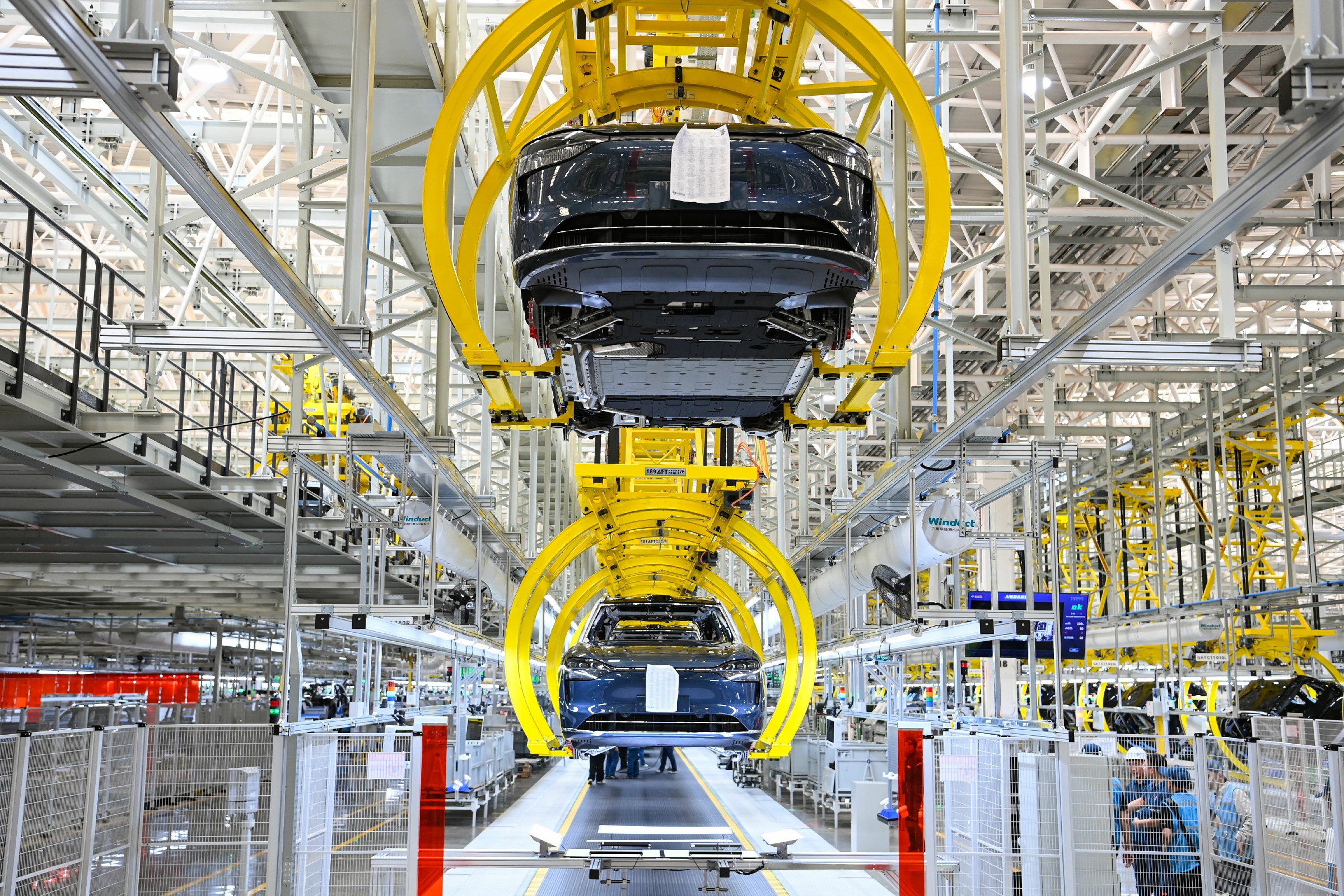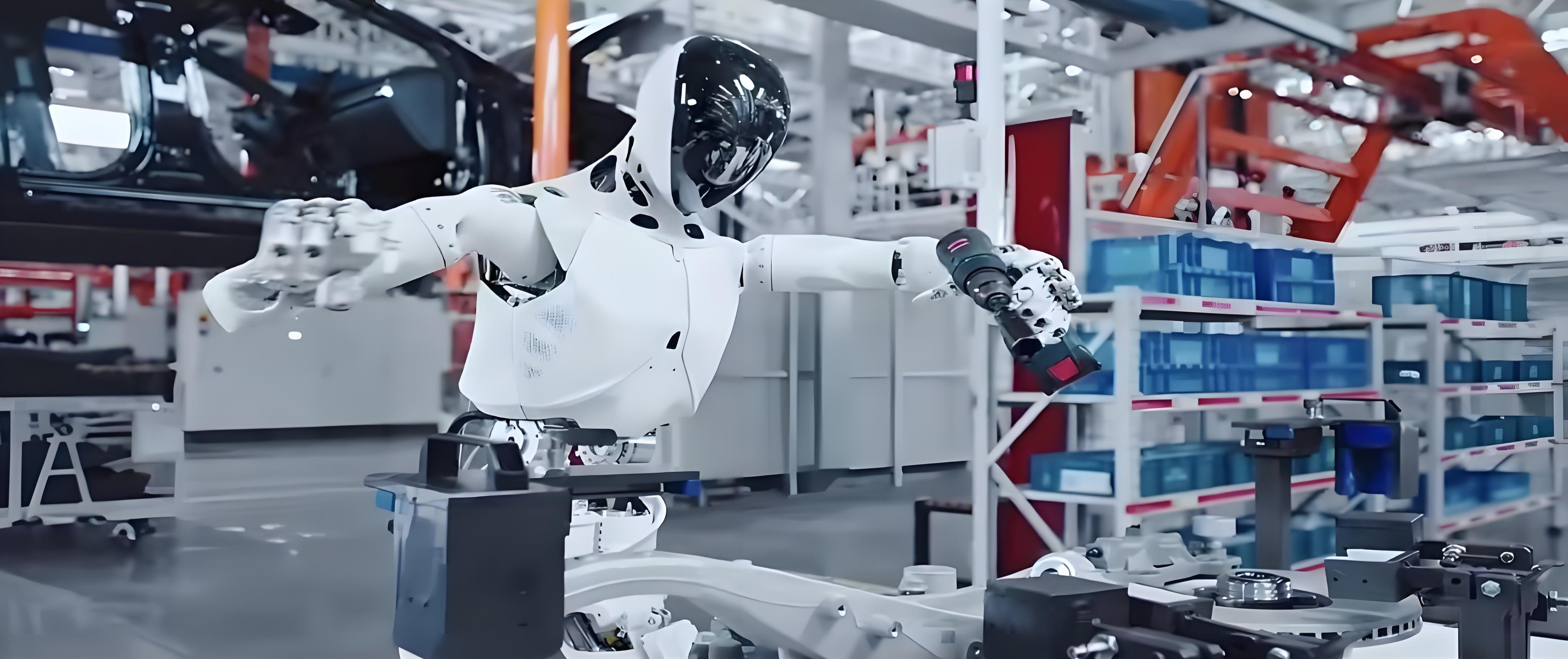 Bridging News
Bridging News
Chongqing NEV Enterprise Seres Explores Potential Move into Embodied AI
Chongqing - Seres, a (new energy vehicle) NEV company in Chongqing Liangjiang New Area, launched its 2025 global spring campus recruitment program on March 22, introducing the role of an embodied AI large model engineer for the first time.

The production line in the final assembly workshop of Seres Super Factory in Liangjiang New Area is operating automatically. (Photo/Wang Jiaxi)
The recruitment announcement states that the engineer will focus on designing AI large model architectures to improve decision-making and execution in robotics and industrial manufacturing. This role includes leveraging large model technology in practical applications, such as enhancing factory robots' ability to interpret production commands and developing interactive features for home service robots.
Meanwhile, Seres has recently established Chongqing Phoenix Technology Co., Ltd., a wholly-owned subsidiary. According to TianYanCha, a public enterprise information platform in China, the new company has a registered capital of 50 million yuan (6.89 million USD) and operates across multiple domains, including AI foundational resources, theoretical research, algorithm software development, public data platforms, and intelligent robotics.
These moves indicate that Seres is strategically expanding into embodied AI and intelligent robotics. When approached for comment on March 24, a Seres insider declined to respond.
Embodied AI has recently captured public attention in China, especially after a humanoid robot from Unitree, a Chinese robotics company, delivered an impressive dance performance. According to People's Daily, Zhao Xiaoguang, a researcher at the Chinese Academy of Sciences' Institute of Automation, explained that large AI models allow robots to mimic certain human brain functions, potentially enabling intelligent decision-making. The fusion of large models with robotics gives rise to what is known as embodied AI.
The convergence of intelligent robotics and automotive technology is becoming increasingly evident. According to China Securities Journal, He Xiaopeng, Chairman of Xpeng, highlighted that the company’s research found a 70% technological overlap between robotics and AI-driven vehicles. This overlap provides a strong foundation for automakers to venture into the robotics industry.
Since 2020, Xpeng has been developing humanoid robots and is preparing to launch its first AI-powered humanoid robot, Iron, in November 2024. The company plans to begin mass production of humanoid robots for industrial use by 2026, integrating advanced coordination of hands, feet, vision, and cognitive functions.

The humanoid robot of Xpeng, Iron, performs screw-tightening operations on the production line. (Photo/Xpeng)
GAC Group unveiled its third-generation embodied AI humanoid robot, GoMate, in December 2024. Featuring a variable-wheel-legged hybrid structure, GoMate is designed for complex terrain navigation, including stair climbing and obstacle traversal. GAC plans to begin mass production of core components in 2025, initially deploying the robots in factory environments, with full-scale production slated for 2026.
Changan Auto has also outlined its roadmap for humanoid robotics. As part of its transition toward becoming a smart, low-carbon mobility technology company, Changan Autoart of its transition toward becoming a smart, low-carbon mobility technology company by 2028.
The intelligent robotics industry holds immense growth potential. According to the Report on the Development of the Humanoid Robot Industry by the China Academy of Information and Communications Technology (CAICT), China’s humanoid robot market is projected to reach 2 billion yuan to 5 billion yuan by 2028 and expand to approximately 5 billion yuan to 50 billion yuan by 2035.
 Related Stories
Related Stories